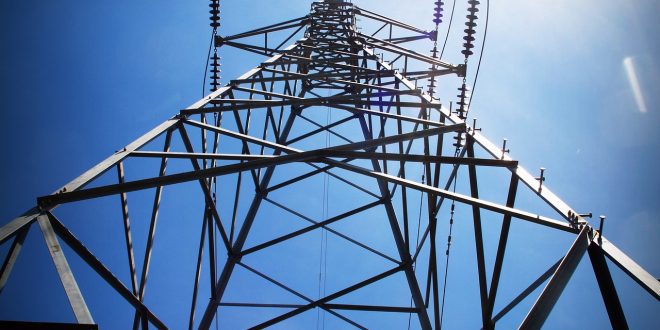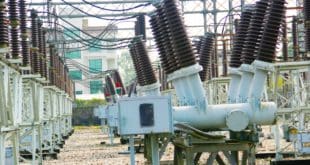By: Dean Motl, vice president of business development, IHI Power Services Corp. (IPSC)
It’s no secret that our generation is experiencing a new era of change on a global scale when it comes to
energy. This moment in time isn’t much different from other pivotal periods in our history that distinctly
formed the world we live in today, like the digital revolution or the industrial revolution before it. The
difference, however, is that it’s driven by the catalysts of global warming and climate change and has
the capacity to significantly impact not only our lives but those of our children, grandchildren and even
our great-grandchildren.
The Problem.
The existential threat we are currently facing is climate change, a phenomenon largely driven by carbon
emissions. Over the course of the last five years or so, evidence of the effects of carbon has become
alarmingly apparent, which led to an urgent and imperative need for a solution. In the past, a more
systematic approach was taken to combat climate change but across our society today, we are seeing a
much more concerted global effort to remove outdated, inefficient energy generation techniques and
replace them with sustainable advanced technologies and alternative energy solutions that aid with
decarbonization, help to reduce greenhouse gas emissions and more.
If our society is making changes, then what is the problem? Simply put, with new and sustainable
solutions comes new and intricate challenges—one of the biggest being access to capital. Substantial
financial investments are constantly needed to help drive change and slow down the impeding effects of
global warming which, unfortunately, can be extremely difficult to come by.
Environmental, social and governance (ESG) requirements and policies largely dictate where an
investment of capital will be placed. The criteria that must be met can often lead to funding for one
focus area rather than a solution or idea that offers a more varied approach. If policymakers establish a
more flexible and diverse way to disperse capital investments across the energy space, there will be
more opportunity to research, develop and deploy different tactics and methodologies that may work in
tandem or separately to create a sustainable future.
What Sustainable Solutions Are We Utilizing Today?
While there are a plethora of problems that still need solving, there have been many technological
advancements that were specifically designed to curb climate change and reduce our carbon footprint.
In fact, the maturation of renewable technologies in areas such as PV solar, wind and battery storage,
among others, have driven down the installation cost by 10-fold over the past decade.
In our organization, we recently introduced “The ROC” – which stands for remote operations center.
This state-of-the-art facility uses advanced digitization to virtually operate assets for our clients across
the country at multiple levels. It also enables power generation plants to operate assets with less need
for manual labor, allowing them to free up employees to focus on more high-level activities that require
human thinking and intervention. Digitizing operational and maintenance needs at a power generation
facility is also beneficial as it utilizes technology to ensure peak energy output, making for better
optimization of capital investments. With this, centralizing control of the mass amounts of energy
generated used to be much more labor intensive and time consuming. Now, due to the power of
automation, advanced tech and innovative thinking, we’re able to ensure plants run more efficiently,
more sustainably, and are as cost-effective as possible.
What Else Can Be Done?
Energy generation techniques are improving but we still have a ways to go in order to establish true
reform. The energy revolution requires all participants in the value chain to rethink their methodology.
From power generation experts to political officials to technology organizations and more, there has to
be a collaborative meeting of the minds to reassess how to sustainably produce, store, transfer and use
the power we generate.
An important step in the process is continued education and understanding. Everyone with a part to
play in the energy revolution needs to firmer grasp the complexities faced in the transitional period if
we’re to move away from fossil fuels and nuclear-based generation. We need more solutions-based
approaches from all stakeholders in order to identify the best way to deploy capital needs from both a
short- and long-term perspective and decision makers must also recognize how renewables interact
with each other and the current dispatch stack. The transfer and consumption of energy vary depending
on the way it is generated. For example, if we put renewables into an existing stack with power sources
like nuclear, coal or gas, the dilution is intermittent and in turn, generates less energy. We must
continue to educate not only those in the power industry but also policymakers, other industries looking
for a solution and of course, the general public.
One idea is to continue to gear toward large-scale utility battery storage, which serves as a buffer in
response to the variability of renewable generation. On the utility side, this looks more like grid
stabilization or EVs on the consumer end. And while this idea provides some opportunity, it also brings
about challenges surrounding raw material procurement and manufacturing demands as well as supply
chain constraints needed to support the providing of such a large portion of energy. Part of this bounces
us right back to where we started, because of emissions of carbon and the effects we are already
working to cure on our environment. The question then becomes, what will replace it?
The industry has made strides in identifying other finite resources that can be used in energy generation
like lithium, in geological mines. This is good news but with any alternative energy generation technique,
it will take time to determine what production would look like on a global scale and what, if any threats
it will cause. In the meantime, we are continuing to improve existing carbon-based assets in order to
bring them closer to neutrality via carbon capture. While this requires massive capital investments for
R&D, it’s necessary in the quest to find a lasting and sustainable energy generation solution.
If we can determine the most optimal mix of energy generation techniques, we may be able to support a
stable and reliable energy grid for the future. One way to achieve this could be by breaking up the
current microgrids into sub-categorical, smaller, independent grids based on region. Such dispersed
grids could potentially be managed down to even a consumer level, in which case, a large portion of the
workforce would be needed to transform carbon-based technology into new renewable solutions. This
would entail apprenticeships, continuing education and pathways created for the highly skilled
workforce we have today. Equally, we will have to set an infrastructure of training and skills programs
that haven’t been seen since the beginning of the electrical industry. This activation could lead to
sustainability, huge job opportunities and may even open up a new industry vertical entirely for energy.
Who is Responsible for Finding a Solution?
Research is taking place to set advanced programs in place for entry points into the energy sector as
well. This will allow the new generation to emerge in the power generation field. We’re looking to
evaluate both near and long-term organizational goals to cultivate strategic plans that will create
minimal impact to end uses while still meeting sustainability objectives.
With so much focus on finding a solution, new teams are emerging in the energy sector. Though it
presents new opportunities, it also inherently brings challenges as they build their own knowledge base.
Their destined to bring fresh eyes and innovative ideas but may easily be overlooked or ignored by the
legacy players in the energy market.
There are many layers to the problem in question and we all have to learn to work well with one
another, whether you fall into the private sector or the public sector. Everyone must realize that this
isn’t merely a political problem where you choose to be right or left in stance. It is a bipartisan problem
and everyone needs to unite a collective goal of creating a sustainable future. There needs to be
collaborative thinking from our greatest minds, across industries, working to solve this complex issue. If
it's only on the shoulders of our political leaders, there is delayed action and often no resolve. Instead,
you should be asking yourself, “How can I bring value or help to find a solution?”
So How Do We Move the Energy Revolution Forward?
As experts in the energy generation sector, we must act as stewards and work to help consumers better
understand the position we are in by educating our society on what ultimately led us here. There needs
to be a shift in our collective focus toward the transferring and manufacturing of energy, an example of
which would be utilizing LED lighting because of its capabilities to reduce electrical energy by 10 times.
With this in mind, we must move forward by centering all facets of power generation industry research
and development around reducing consumption while still minimizing the impact for the consumer to
create lasting change. There is much to be done on the road to true energy reform but a great starting
point is to stay innovative and further educate ourselves as industry experts so we can properly inform
and persuade the public to insight the necessary change needed to revolutionize the way we produce,
transfer, store and use energy.
###
About the Author:
Dean Motl brings more than 30 years of experience in power industry O&M, asset management, general
management and business development to IHI Power Services Corp (IPSC). Dean is currently serving as
the vice president of business development for IPSC, in which he provides strategic leadership for
numerous new opportunities and development to support the growth of the company.
 Alternative Energy HQ solar power for homes, wind energy, and bio fuel issues
Alternative Energy HQ solar power for homes, wind energy, and bio fuel issues







